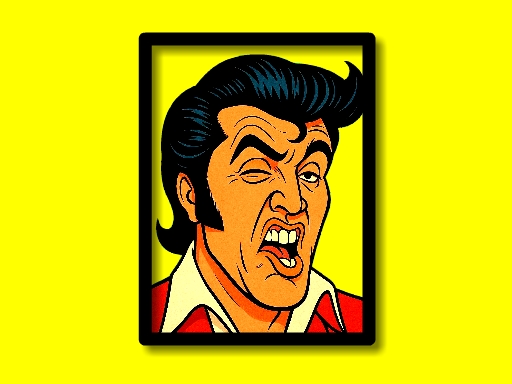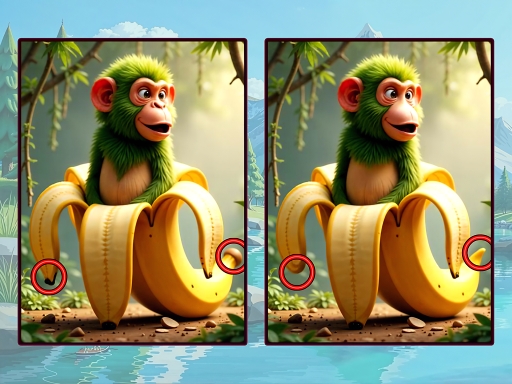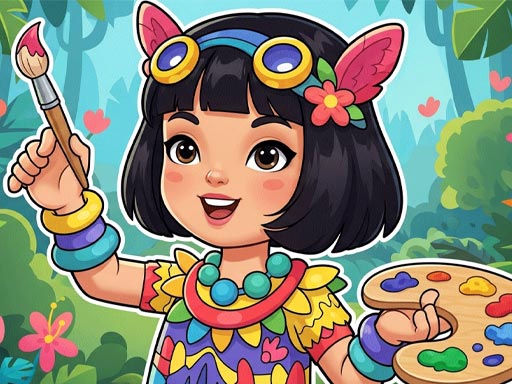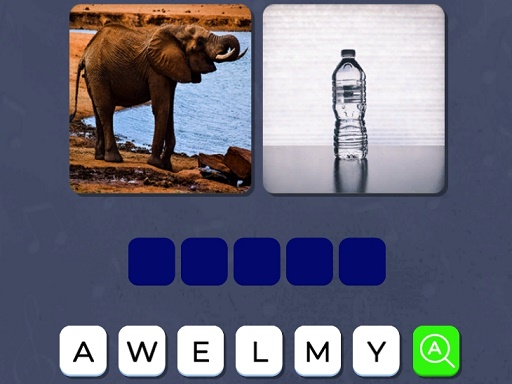Mental Reset: Logic Puzzles
About Mental Reset: Logic Puzzles
Dude, you *have* to hear about this game I just stumbled upon. Seriously, put down whatever epic open-world grind you’re on for a second, because this is something entirely different, and honestly, it’s exactly what I didn’t know I needed. It’s called *Mental Reset: Logic Puzzles*, and I know, I know, the name sounds a bit… clinical, right? Like some self-help app. But trust me, it’s anything but. It’s this incredibly quirky, utterly absorbing little gem that has completely hijacked my evenings, and I’m not even mad about it.
You know how sometimes you just want to *think*? Not in a high-stress, strategy-overload kind of way, but in that satisfying, quiet, problem-solving kind of way? That’s what this game delivers, in spades. Imagine a jigsaw puzzle, right? But throw out all your preconceived notions of what a jigsaw puzzle looks like. Because these aren’t your grandma’s neatly cut, interlocking pieces. Oh no. The pieces in *Mental Reset* look like they’ve been torn from an old, well-loved book or a faded photograph. Each edge is ragged, uneven, unique. It’s like someone just ripped up a beautiful image and then challenged you to put it back together. And honestly, that’s where the magic begins.
The first time I launched it, I was expecting something pretty standard, maybe a little sterile. But the aesthetic immediately grabbed me. There’s this understated charm to it, a warmth that comes from the visual style. The way the torn edges are rendered, you can almost feel the paper between your fingers, the slight curl of the corners. It’s not about flashy graphics; it’s about a deliberate, tactile design choice that makes the whole experience feel incredibly grounded and, well, *real*. You’re not just moving polygons around; you’re handling fragments of something beautiful, trying to restore its wholeness.
What I love about games like this is that they offer a different kind of immersion. It’s not about being dropped into a vast world with a compelling narrative, though I adore those games too. This is about being drawn into a singular, focused task, where the entire world shrinks down to the edges of your screen and the scattered pieces before you. You know that feeling when you’re so deep into a problem that everything else just fades away? That’s the *Mental Reset* experience. I’ve lost track of time so many evenings, just staring at a handful of torn paper fragments, trying to discern their secret.
They give you options, which is brilliant. You can go for a quick fix with the 16-piece puzzles. Those are perfect for when you’ve only got a few minutes, or when your brain feels like it’s been put through a blender after a particularly intense work day or, let’s be real, a particularly frustrating raid. You just drag, drop, and watch the image snap back together with a satisfying little *thunk*. It’s like a mental palate cleanser. A little hit of dopamine that tells your brain, "Hey, you still got it, champ." But then there are the 32-piece challenges, and that’s where things get really interesting. Those are the ones that demand a bit more from you, that make you lean forward, squint at your monitor, and really *see* the subtle nuances in the torn edges and the fragments of color.
The brilliant thing about this is that it’s not just about matching colors or shapes. Because the pieces are so irregular, you’re constantly looking for those unique rips and tears. It’s like a detective game, but instead of clues, you’re searching for the perfect fit of a jagged edge against another. You’ll find yourself rotating a piece over and over, trying every possible orientation, and then suddenly, *boom*, it clicks. Not just visually, but in your head. That’s the moment. That’s the feeling. That little spark of recognition when two seemingly disparate pieces suddenly reveal their undeniable connection. It’s not a loud, explosive victory, but a quiet, profound satisfaction that settles deep in your chest.
Honestly, I’ve always been drawn to games that offer this kind of tactile, almost meditative challenge. There’s something magical about taking chaos and bringing it back to order. It’s like you’re literally fixing the "brainrot" the game mentions, and it’s not an exaggeration. After a session, my mind feels clearer, sharper. It’s a genuine reset. You start with this jumbled mess, a kaleidoscope of ripped paper, and slowly, piece by piece, a coherent image emerges. And when that final piece drops into place, and the full picture finally comes alive, it’s incredibly rewarding. You see the whole, beautiful scene you’ve painstakingly reconstructed, and there’s a real sense of accomplishment.
The real magic happens when you get into a rhythm. You start to anticipate the way certain edges might fit, you develop an eye for the subtle gradients of color, the way a tiny sliver of a shadow on one piece might perfectly align with a light source on another. You become an expert in the geometry of torn paper. And it’s not just about the immediate gratification of a match; it’s about the anticipation. You’ll find yourself holding a piece, knowing it belongs *somewhere* in this sprawling puzzle, but not quite where yet. And that curiosity, that gentle prodding of your mind, keeps you engaged, keeps you searching.
In my experience, the best moments come when you’re almost done, and you’ve got just a few pieces left. The pressure, if you can even call it that in such a relaxing game, slightly ramps up. You’ve come so far, and now you’re on the cusp of completion. You can almost feel the picture breathing, waiting for those last few fragments to make it whole. And when that last piece, the one that’s been eluding you for what feels like an eternity, finally slots into its rightful spot, there’s this wonderful sense of closure. It’s a small victory, but it’s *your* victory, hard-earned through patience and keen observation.
This isn’t a game that’s going to give you adrenaline rushes or epic boss battles, but it offers something just as valuable: a sanctuary for your mind. It’s a place where you can unwind, focus, and feel genuinely productive in a way that’s completely different from other gaming experiences. It’s about the subtle satisfaction, the quiet triumph, the joy of bringing order to chaos. And the variety of images they’ve got is great too – you never quite know what beautiful scene you’re going to be piecing back together next. Each one is a little journey of discovery.
So yeah, I’m genuinely excited about *Mental Reset: Logic Puzzles*. It’s that perfect little escape, that perfect way to wind down or kickstart your brain. It’s a testament to clever game design, proving that you don’t need a massive budget or groundbreaking mechanics to create something truly engaging and deeply satisfying. You just need a brilliant, simple idea executed with care and an understanding of what makes a puzzle truly *click*. Seriously, dude, give it a shot. You won’t regret it. You might just find your new favorite way to fix that brainrot.
You know how sometimes you just want to *think*? Not in a high-stress, strategy-overload kind of way, but in that satisfying, quiet, problem-solving kind of way? That’s what this game delivers, in spades. Imagine a jigsaw puzzle, right? But throw out all your preconceived notions of what a jigsaw puzzle looks like. Because these aren’t your grandma’s neatly cut, interlocking pieces. Oh no. The pieces in *Mental Reset* look like they’ve been torn from an old, well-loved book or a faded photograph. Each edge is ragged, uneven, unique. It’s like someone just ripped up a beautiful image and then challenged you to put it back together. And honestly, that’s where the magic begins.
The first time I launched it, I was expecting something pretty standard, maybe a little sterile. But the aesthetic immediately grabbed me. There’s this understated charm to it, a warmth that comes from the visual style. The way the torn edges are rendered, you can almost feel the paper between your fingers, the slight curl of the corners. It’s not about flashy graphics; it’s about a deliberate, tactile design choice that makes the whole experience feel incredibly grounded and, well, *real*. You’re not just moving polygons around; you’re handling fragments of something beautiful, trying to restore its wholeness.
What I love about games like this is that they offer a different kind of immersion. It’s not about being dropped into a vast world with a compelling narrative, though I adore those games too. This is about being drawn into a singular, focused task, where the entire world shrinks down to the edges of your screen and the scattered pieces before you. You know that feeling when you’re so deep into a problem that everything else just fades away? That’s the *Mental Reset* experience. I’ve lost track of time so many evenings, just staring at a handful of torn paper fragments, trying to discern their secret.
They give you options, which is brilliant. You can go for a quick fix with the 16-piece puzzles. Those are perfect for when you’ve only got a few minutes, or when your brain feels like it’s been put through a blender after a particularly intense work day or, let’s be real, a particularly frustrating raid. You just drag, drop, and watch the image snap back together with a satisfying little *thunk*. It’s like a mental palate cleanser. A little hit of dopamine that tells your brain, "Hey, you still got it, champ." But then there are the 32-piece challenges, and that’s where things get really interesting. Those are the ones that demand a bit more from you, that make you lean forward, squint at your monitor, and really *see* the subtle nuances in the torn edges and the fragments of color.
The brilliant thing about this is that it’s not just about matching colors or shapes. Because the pieces are so irregular, you’re constantly looking for those unique rips and tears. It’s like a detective game, but instead of clues, you’re searching for the perfect fit of a jagged edge against another. You’ll find yourself rotating a piece over and over, trying every possible orientation, and then suddenly, *boom*, it clicks. Not just visually, but in your head. That’s the moment. That’s the feeling. That little spark of recognition when two seemingly disparate pieces suddenly reveal their undeniable connection. It’s not a loud, explosive victory, but a quiet, profound satisfaction that settles deep in your chest.
Honestly, I’ve always been drawn to games that offer this kind of tactile, almost meditative challenge. There’s something magical about taking chaos and bringing it back to order. It’s like you’re literally fixing the "brainrot" the game mentions, and it’s not an exaggeration. After a session, my mind feels clearer, sharper. It’s a genuine reset. You start with this jumbled mess, a kaleidoscope of ripped paper, and slowly, piece by piece, a coherent image emerges. And when that final piece drops into place, and the full picture finally comes alive, it’s incredibly rewarding. You see the whole, beautiful scene you’ve painstakingly reconstructed, and there’s a real sense of accomplishment.
The real magic happens when you get into a rhythm. You start to anticipate the way certain edges might fit, you develop an eye for the subtle gradients of color, the way a tiny sliver of a shadow on one piece might perfectly align with a light source on another. You become an expert in the geometry of torn paper. And it’s not just about the immediate gratification of a match; it’s about the anticipation. You’ll find yourself holding a piece, knowing it belongs *somewhere* in this sprawling puzzle, but not quite where yet. And that curiosity, that gentle prodding of your mind, keeps you engaged, keeps you searching.
In my experience, the best moments come when you’re almost done, and you’ve got just a few pieces left. The pressure, if you can even call it that in such a relaxing game, slightly ramps up. You’ve come so far, and now you’re on the cusp of completion. You can almost feel the picture breathing, waiting for those last few fragments to make it whole. And when that last piece, the one that’s been eluding you for what feels like an eternity, finally slots into its rightful spot, there’s this wonderful sense of closure. It’s a small victory, but it’s *your* victory, hard-earned through patience and keen observation.
This isn’t a game that’s going to give you adrenaline rushes or epic boss battles, but it offers something just as valuable: a sanctuary for your mind. It’s a place where you can unwind, focus, and feel genuinely productive in a way that’s completely different from other gaming experiences. It’s about the subtle satisfaction, the quiet triumph, the joy of bringing order to chaos. And the variety of images they’ve got is great too – you never quite know what beautiful scene you’re going to be piecing back together next. Each one is a little journey of discovery.
So yeah, I’m genuinely excited about *Mental Reset: Logic Puzzles*. It’s that perfect little escape, that perfect way to wind down or kickstart your brain. It’s a testament to clever game design, proving that you don’t need a massive budget or groundbreaking mechanics to create something truly engaging and deeply satisfying. You just need a brilliant, simple idea executed with care and an understanding of what makes a puzzle truly *click*. Seriously, dude, give it a shot. You won’t regret it. You might just find your new favorite way to fix that brainrot.
Enjoy playing Mental Reset: Logic Puzzles online for free on Qotori games. This Puzzle game offers amazing gameplay and stunning graphics. No downloads required, play directly in your browser!
How to Play
Use a mouse or touchpad to drag and drop to fit the torn pieces to their right position





Comments
This game is awesome! I love the graphics and gameplay.
One of the best games I've played recently. Highly recommended!